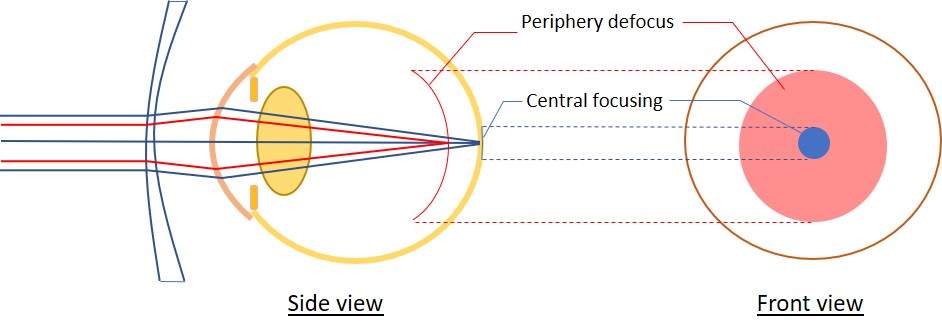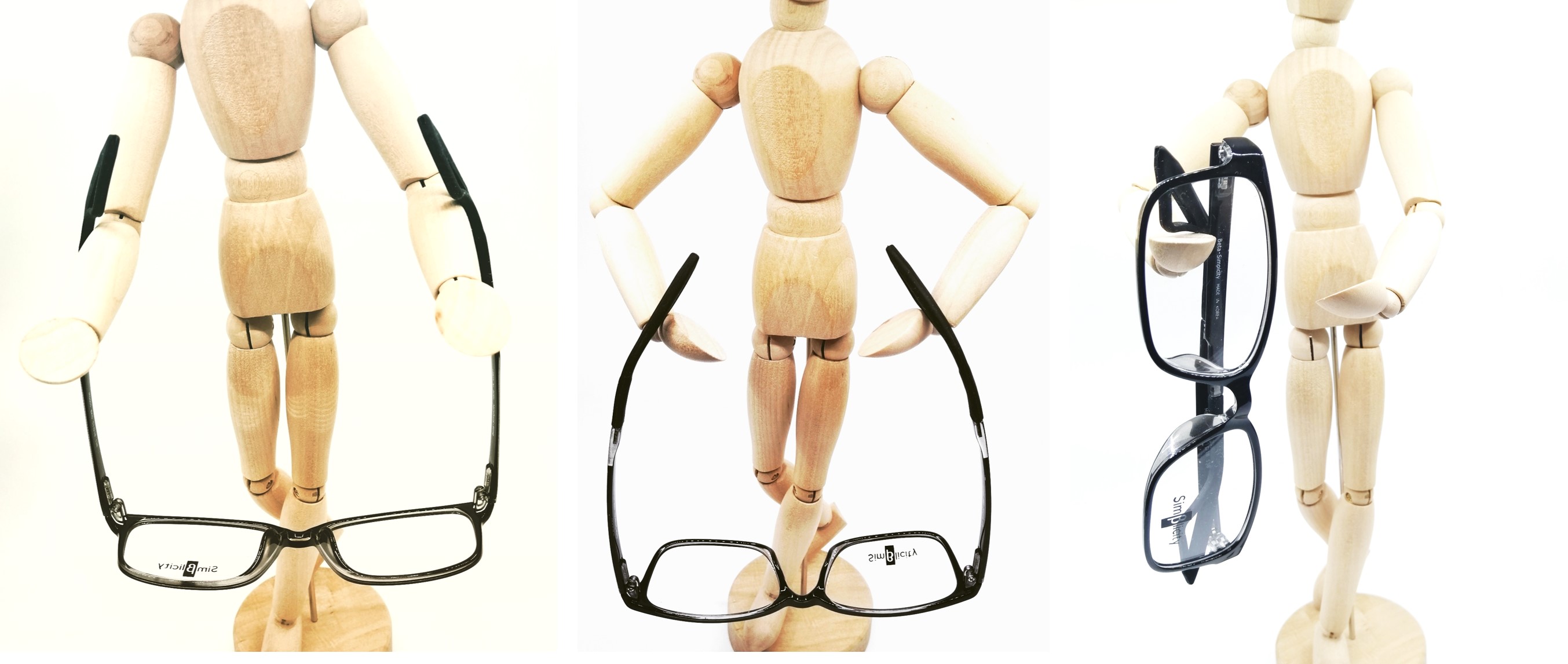Blog | Myopia control lens and frame combination
The world is seeing rising cases of myopia. In particular, Asian countries like Singapore, Taiwan, Korea and Japan has very high prevalence of myopia of over 90%. Several methods have been developed to control myopia progression and the least invasive is to use glasses with myopia control lenses. Major lens companies such as Hoya, Zeiss and Essilor has each came out with their own myopia control lens.
Recent research using animal studies and from clinical trials have shown that peripheral defocus is effective in controlling myopia progression. This works by having visual images projecting forward of the retina. In our eyes, it is the fovea, a small spot on the retina where our vision is the sharpest and where the lights coming through our cornea converges to. Recent development in myopia control lens that uses the principle of peripheral defocus have lens design where the centre area of the lens focus the light on the fovea to give a clear vision while off centre area of the lens, the images at formed forward of the retina. Current brands where myopia control lens uses peripheral defocus concept are Hoya Miyosmart and Zeiss Myovision.
 Author's illustration of peripheral defocus by Hoya Miyosmart. |
Rapid progress on myopia cause and treatment studies has resulted in the introduction of new lens design. However, the design of the frames that carry these myopia control lenses have not caught up. Glasses slipping has been an ever present nuisance but for myopia control, glasses slipping may hamper the effectiveness of myopia control len.
The design of myopia control lens is such that specific region of the lens have a role to play and this is most effective when it is in alignment with the eye. The location where the image is projected in the eye is also important for the treatment. Pantoscopic tilt of the lens, distance between the cornea and the lens all plays a part for precise focusing of the image in the eye. The alignment will also be off if the glasses slips. In practice, if the optician allows the customer to select frames without considering the requirements of the lens, or if the frame slips, the desired focusing effect of the lens will not be met. This may explain differing treatment outcome in clinical studies and the large difference in efficacy between animal studies and human clinical trials.
Many modern frame designs tend to focus on the nosepad to prevent slipping. It is generally believed that with proper adjustment of the nosepad and having rubberized nosepad is the best way to prevent glasses from slipping. However, a study by Hasebe et al (2005) showed that metal frame with silicone wire nosepad slips down the nose by an average of 3.7 mm. When used with myopia control lens, this reduces their effect and hence potentially reduces the efficacy of the treatment. Another method to prevent frame slipping is to use curly temple design. Such design is generally uncomfortable as it only uses the back of the ear for support.
Beta-Simplicity has developed anchor tip eyewear which uses friction to the side of the head and the back of the ears for support. The combination of two supporting forces means greater support and less force requirement at each contact area. Further, the contact point to the back of the ears are made of soft rubber and easily compressible so that the force application is gradual. This design ensures that the frame is able to hold the lens in the proper position. Thus when used with myopia control lens, a better and more consistent myopia treatment outcome can be expected.
 Demonstrating the holding ability of Beta-Simplicity Eyewear from the side and back of its anchor tip design. |
30 November 2019
Updated. -
Reference
- Hasebe S, Nakatsuka C, Hamasaki I, Ohtsuki H. Downward deviation of progressive addition lenses in a myopia control trial. Ophthal. Physiol. Opt. 2005 25: 310 - 314
Read also
14 July 2018
26 July 2018
27 January 2018